How Not To Sound Like an Idiot When Making Small Talk
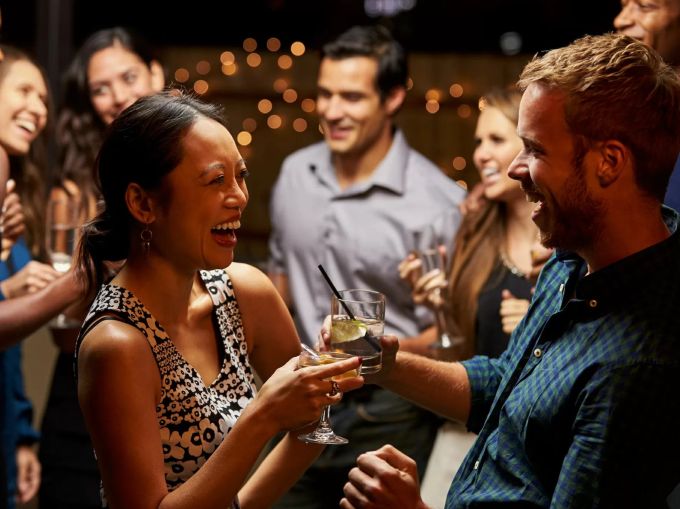
Hiring manager: “Who is buried in Grant’s tomb?” “Uh,” says guy, “George Washington?”
Harvard and Wharton researchers advise: How Not To Sound Like an Idiot When Making Small Talk”
[Reports CNBC]
“Making small talk with someone you’ve just met can be terrifying. Common sense tells us we need to convince the other person that we’re smart, so we casually drop our job title, education and accomplishments…
I found that the answer is a lot simpler than you think: ask for advice. Seeking advice actually makes you look smarter.”
Says author Joanne Lipman *
COMMENTS CHARLES McCain: Make certain to mention this quote from Soren Kierkegaard:
“Life can only be understood backwards; but it must be lived forwards.”
No one will remember anything about him but they will probably have heard his name it in college, and know he is a philosopher impossible to understand.
If you use a quote which sounds intelligent and serious but don’t remember who said it, attribute the quote to Winston Churchill because he said thousands of quotable things.
(+)cnbc.com/2023/06/06/harvard-researchers-the-no-1-way-to-sound-smarter-more-likable-when-making-small-talk
*Joanne Lipman is the bestselling author of ”NEXT! The Power of Reinvention in Life and Work″ and ”That’s What She Said: What Men and Women Know About Working Together.”
(photo courtesy https://alchemiq.com/how-to-organize-a-business-cocktail-party/
Charles McCain, author of An Honorable German, a WW2 naval epic featuring a heroic but deeply conflicted anti-Nazi German naval officer. The novel is about him and his fiance set against the backdrop of the war.
available on Kindle here: https://tinyurl.com/McCainAmazonAHG
available on Nook here: https://tinyurl.com/AHGMcCainNook
The Wooden Wonder: Mosquito Built Entirely of Wood One of Best RAF Aircraft WW2
The Wooden Wonder
RAF MOSQUITO AIRFRAME BUILT ENTIRELY OF WOOD
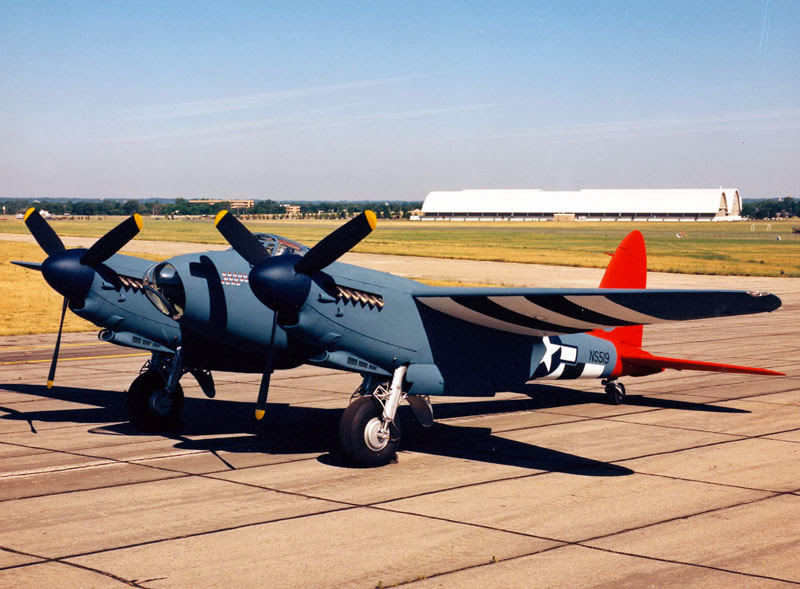
DAYTON, Ohio — De Havilland DH 98 Mosquito at the National Museum of the United States Air Force. (U.S. Air Force photo)
De Haviland D-98 Mosquito Mk. 35 restored to Mk XVI version. Painted as a plane of 653 Bomb Squadron. National Museum of United States Air Force, Dayton, Ohio, USA.
Engines: Two Rolls-Royce Merlins of 1,690 hp each
Maximum speed: 415 mph
Range: 1,955 miles
Ceiling: 42,000 ft
Once in service, RAF photo reconnaissance only used Mosquitos because they were fast and had a ceiling of 42,000. Very difficult for Germans to shoot down.
once in service, RAF photo reconnaissance only used Mosquitos because they were fast and had a ceiling of 42,000. Very difficult for Germans to shoot down.

once in service, RAF photo reconnaissance only used Mosquitos because they were fast and had a ceiling of 42,000. Very difficult for Germans to shoot down.
DE HAVILLAND DH.98 MOSQUITO Mosquito PR Mark XVI of 544 Squadron RAF. © IWM.
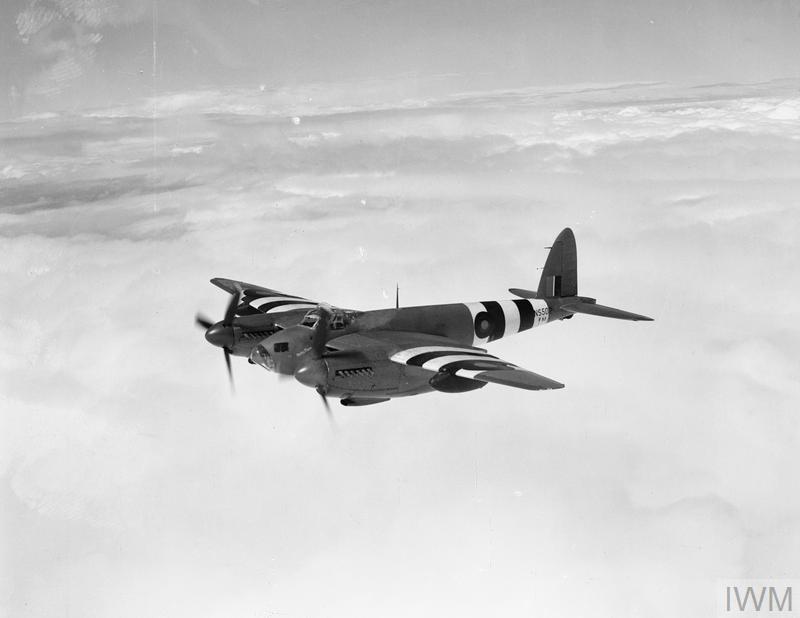
AIRCRAFT OF THE ROYAL AIR FORCE 1939-1945: DE HAVILLAND DH.98 MOSQUITO. (CH 14258) Mosquito PR Mark XVI, NS502 ?M?, of No. 544 Squadron RAF based at Benson, Oxfordshire, in flight. Copyright: © IWM. Original Source: http://www.iwm.org.uk/collections/item/object/205222128
McCain: “The aircraft is painted with ‘invasion stripes’ which were painted on aircraft immediately before D-Day to establish there were Allied aircraft.”
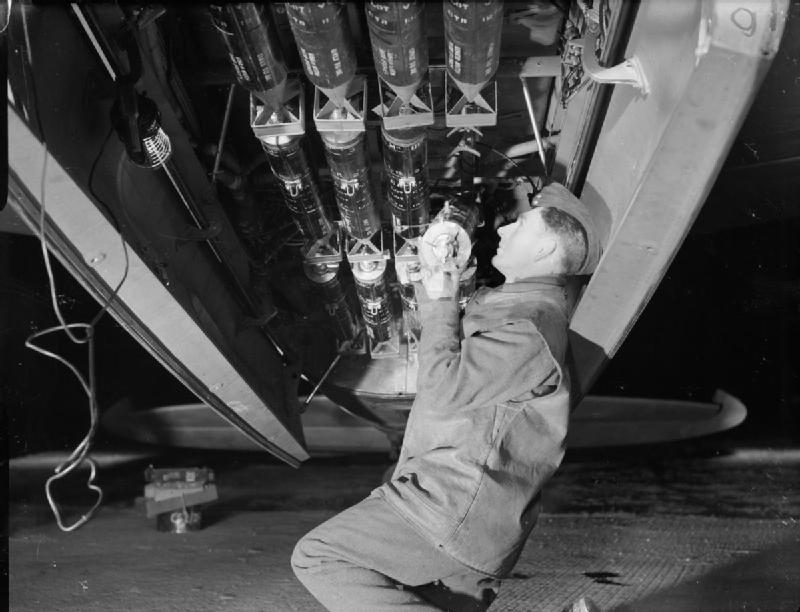
An armourer, Leading Aircraftman H Knight of Cliffe-at-Hoo, Kent, loads 19-lb 4.5-inch Photoflash bombs into a De Havilland PR Mark XVI of No. 140 Squadron RAF at B58/Melsbroek, Belgium, prior to a night photographic-reconnaissance sortie. Photo courtesy of Imperial War Museum, in the public domain.
Photo flash bombs were dropped by photo-reconnaissance aircraft to allow them to photograph areas at night. The bombs exploded at low altitudes and produced a brilliant white light fulfilling the function of a flashbulb.
posted and copyright 2021 by Charles McCain, author of An Honorable German, a WW2 naval epic featuring a heroic but deeply conflicted anti-Nazi German naval officer. The novel is about him and his fiance set against the backdrop of the war.
Buy My Novel An Honorable German: “…mesmerizing from the first to the last page.”
THIS NOVEL IS ABOUT AN ANTI-NAZI GERMAN NAVAL OFFICER
…mesmerizing from the first to the last page…the bombing scenes of Berlin by the Allies are terrifying… MyShelf.com
Several Germans who were young teenagers in Nazi Germany, read the manuscript for accuracy. some years ago. One of them had been in a bomb shelter during a bombing raid on Berlin and told me I had perfectly captured what it was like
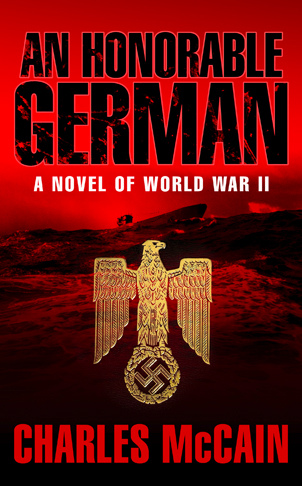
The paperback cover of An Honorable German by Charles McCain
“A gripping and eye-opening novel . . .Booklist:
“Truly superb storytelling, crisp prose, and an amazing knowledge of German naval customs, history, and traditions make this an outstanding read.” Minneapolis Star-Tribune
available on Kindle here: https://tinyurl.com/McCainAmazonAHG
available on Nook here: https://tinyurl.com/AHGMcCainNook
In the novel, there are four chapters aboard U-114, commanded by the main character, who is the honorable German of the title. (U-114 was never built).
The Battle of the North Atlantic is the Name of the Campaign Against German U-Boats Sinking Allied Merchant Ships. We won.
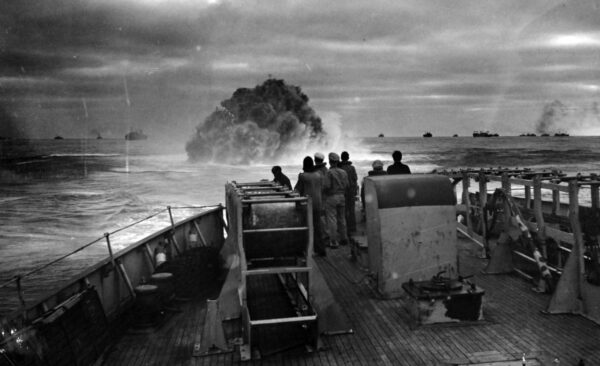
Sinking of German submarine U-175, April 1943. The submarine was sunk off south-west of Ireland by USCGC Spencer (WPG-36) on April 17, 1943. Coast Guardsmen on the deck of the U.S. Coast Guard Cutter USCGC SPENCER watch the explosion of a depth charge which blasted a Nazi U-Boat’s hope of breaking into the center of a large convoy. Photograph and caption by USCG. From the US National Archives.
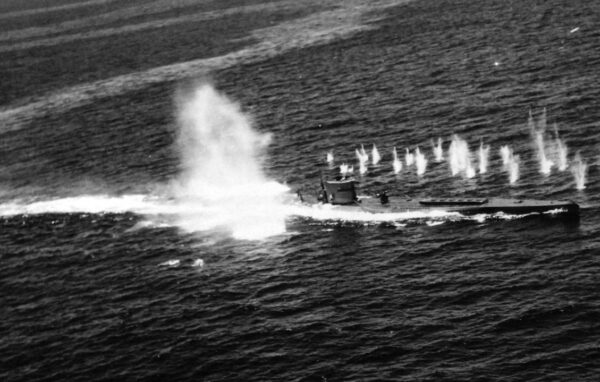
German U-boat, U-118, attacked and sunk by aircraft from USS Bogue (ACV-9), June 12, 1943. Official U.S. Navy Photograph, now in the collections of the National Archives.